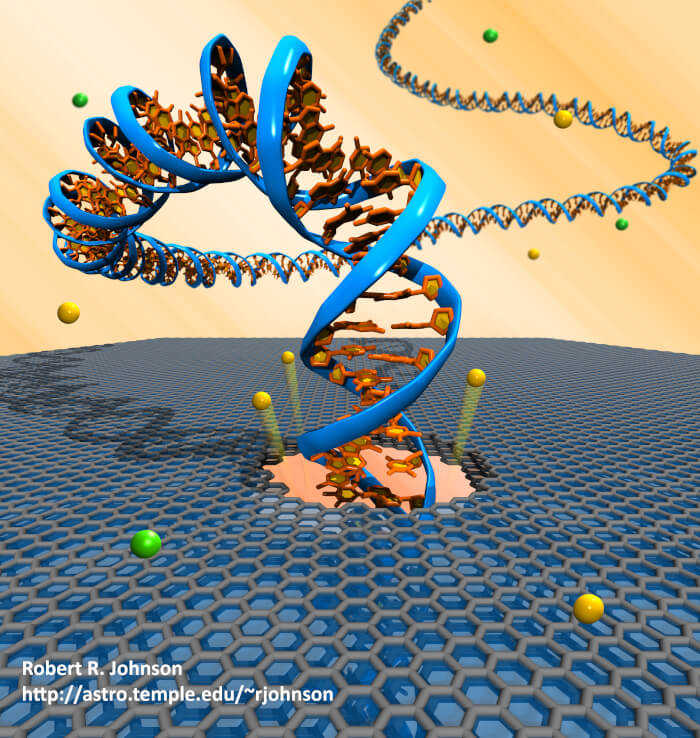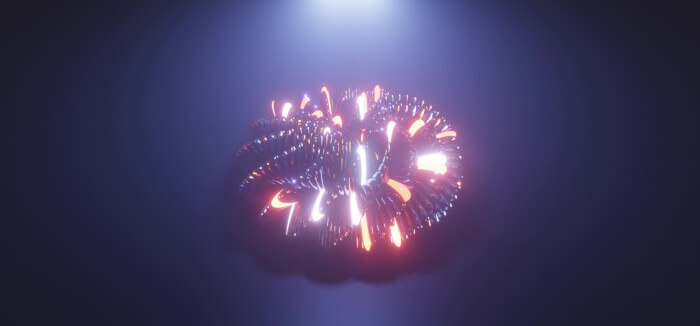Tachyon is a parallel / multiprocessor ray tracing system.
Tachyon is heavily used as a built-in ray tracing engine wthin VMD, where it is frequently used to render scenes containing hundreds of millions of objects, often with ambient occlusion lighting, depth cueing, angle-modulated transparency, and other features that are well suited for molecular visualization. Tachyon has been used to render VMD movies in parallel on the NCSA Blue Waters supercomputer, on over 15,000 CPU cores.
One of the advanced features provided by the Tachyon ray tracer (built into VMD), is the ability to render scenes with ambient occlusion lighting. This lighting technique mimics some of the effects that occur under conditions of omnidirectional diffuse illumination, e.g. outdoors on an overcast day.
This lighting used in concert with traditional point source lights and directional lights to increase the perception of shape, depth in images of molecular structures, and decreases the deleterious effects of harsh shadows which otherwise occur with lighting based on a small number of point sources. This lighting model is particularly good at emulating the appearance of chalky materials, and can make molecular graphics more understandable and aesthetically appealing.
Features include:
- TachyonOptiX GPU-accelerated ray tracing engine. The engine is written in C++, CUDA, and OptiX 7, with a GPU-centric API
- Supports MPI for distributed memory parallel computers, threads for shared memory machines, and can support both simultaneously for clusters of shared memory machines. Tachyon is built as a C/C++ callable library, which can be used with the included demo programs or within your own application. The distribution also includes a simple scene file parser front-end which reads
a few other input file formats such as MGF, NFF, and an old version of AC3D. - Automatic grid-based spatial decomposition scheme for greatly increased rendering speeds.
- Simple antialiasing based on psuedo-random supersampling.
- Supports the typical ray tracer features including:
- Provides many useful geometric objects including Spheres, Planes, Triangles, Cylinders, Quadrics, and Rings.
- Texture mapping.
- HDR image output.
- Ambient occlusion lighting.
- Material properties for shading with angle-modulated transparency.
- Support for various triangle mesh and volumetric texture formats beneficial for molecular visualization (e.g. rendering VMD scenes).
- Cross-platform support.
Website: github.com/thesketh/Tachyon
Support:
Developer: John E. Stone
License: BSD-like License

Tachyon is written in C and C++. Learn C with our recommended free books and free tutorials. Learn C++ with our recommended free books and free tutorials.
| Popular series | |
|---|---|
| The largest compilation of the best free and open source software in the universe. Each article is supplied with a legendary ratings chart helping you to make informed decisions. | |
| Hundreds of in-depth reviews offering our unbiased and expert opinion on software. We offer helpful and impartial information. | |
| The Big List of Active Linux Distros is a large compilation of actively developed Linux distributions. | |
| Replace proprietary software with open source alternatives: Google, Microsoft, Apple, Adobe, IBM, Autodesk, Oracle, Atlassian, Corel, Cisco, Intuit, SAS, Progress, Salesforce, and Citrix | |
| Awesome Free Linux Games Tools showcases a series of tools that making gaming on Linux a more pleasurable experience. This is a new series. | |
| Machine Learning explores practical applications of machine learning and deep learning from a Linux perspective. We've written reviews of more than 40 self-hosted apps. All are free and open source. | |
| New to Linux? Read our Linux for Starters series. We start right at the basics and teach you everything you need to know to get started with Linux. | |
| Alternatives to popular CLI tools showcases essential tools that are modern replacements for core Linux utilities. | |
| Essential Linux system tools focuses on small, indispensable utilities, useful for system administrators as well as regular users. | |
| Linux utilities to maximise your productivity. Small, indispensable tools, useful for anyone running a Linux machine. | |
| Surveys popular streaming services from a Linux perspective: Amazon Music Unlimited, Myuzi, Spotify, Deezer, Tidal. | |
| Saving Money with Linux looks at how you can reduce your energy bills running Linux. | |
| Home computers became commonplace in the 1980s. Emulate home computers including the Commodore 64, Amiga, Atari ST, ZX81, Amstrad CPC, and ZX Spectrum. | |
| Now and Then examines how promising open source software fared over the years. It can be a bumpy ride. | |
| Linux at Home looks at a range of home activities where Linux can play its part, making the most of our time at home, keeping active and engaged. | |
| Linux Candy reveals the lighter side of Linux. Have some fun and escape from the daily drudgery. | |
| Getting Started with Docker helps you master Docker, a set of platform as a service products that delivers software in packages called containers. | |
| Best Free Android Apps. We showcase free Android apps that are definitely worth downloading. There's a strict eligibility criteria for inclusion in this series. | |
| These best free books accelerate your learning of every programming language. Learn a new language today! | |
| These free tutorials offer the perfect tonic to our free programming books series. | |
| Linux Around The World showcases usergroups that are relevant to Linux enthusiasts. Great ways to meet up with fellow enthusiasts. | |
| Stars and Stripes is an occasional series looking at the impact of Linux in the USA. | |
